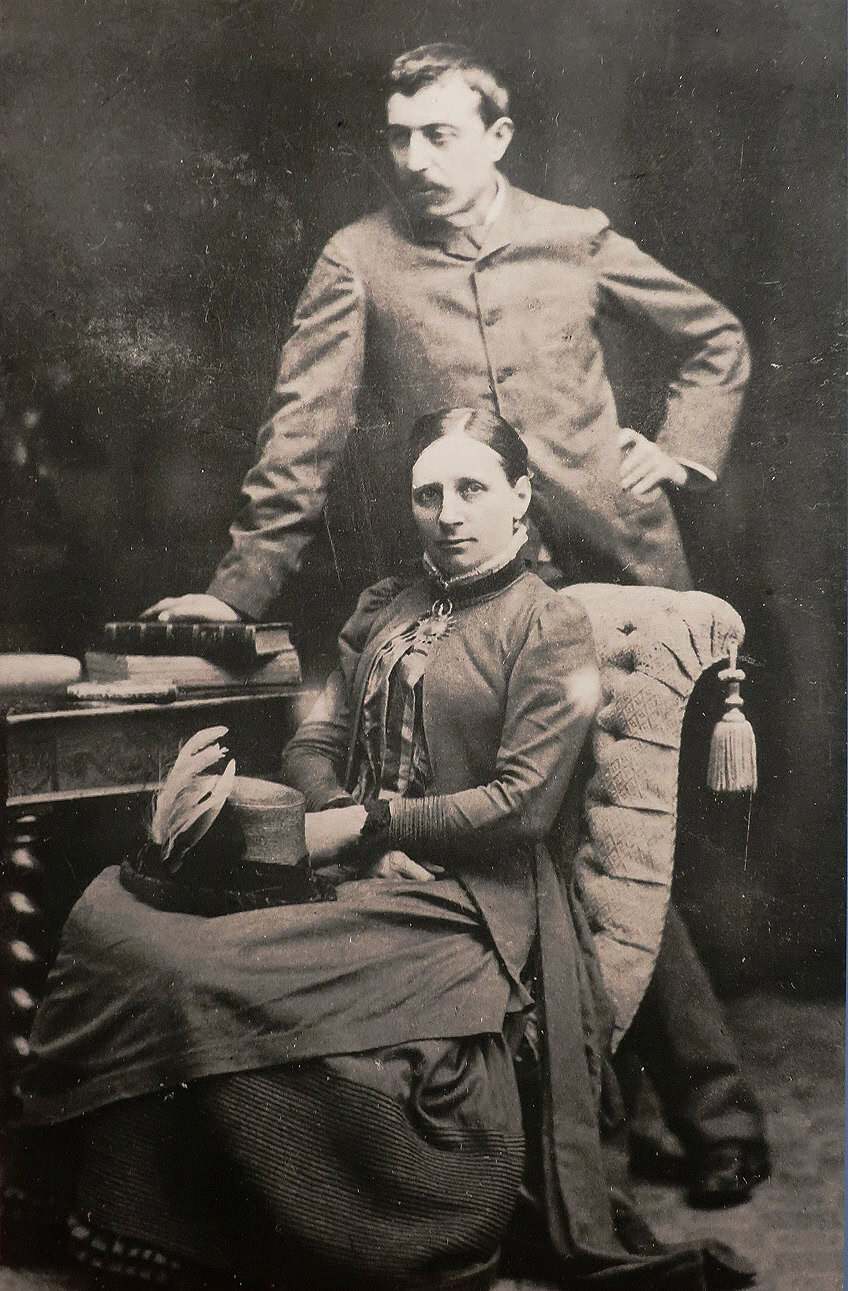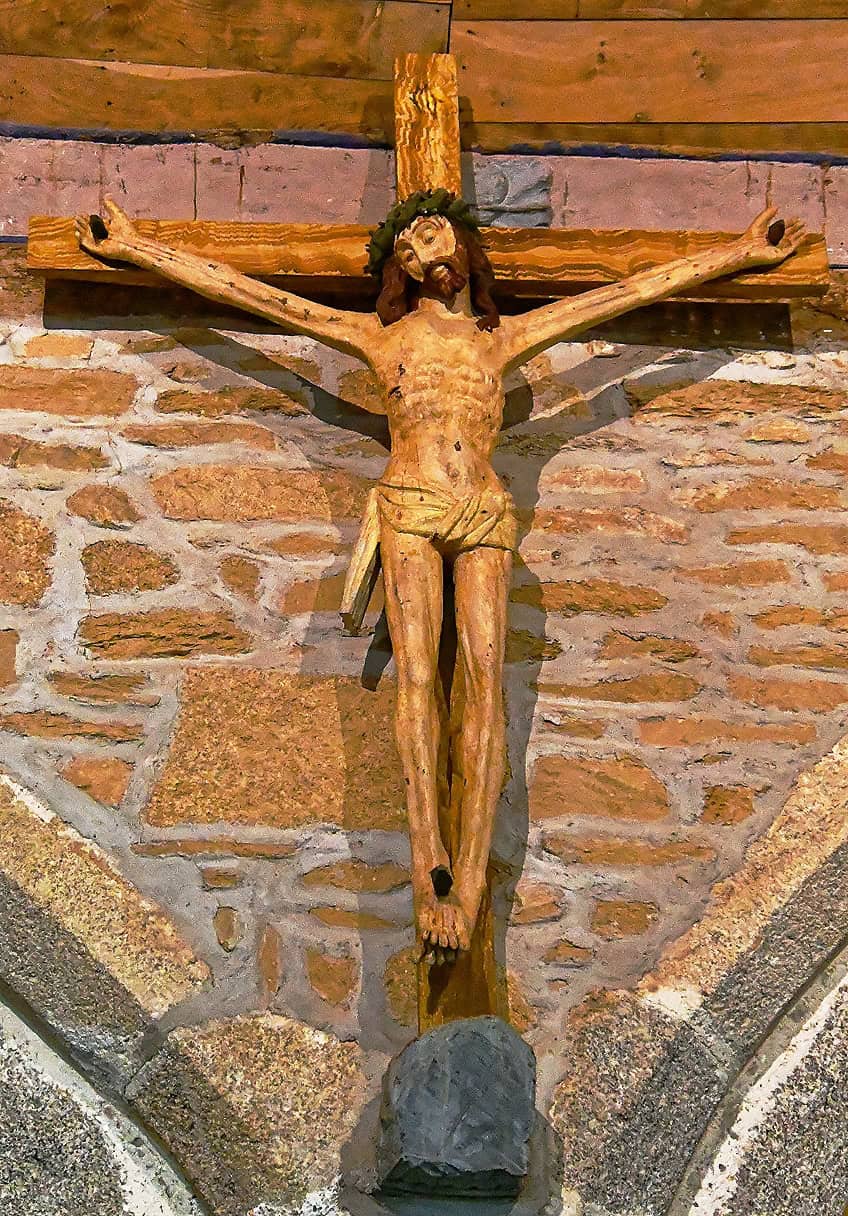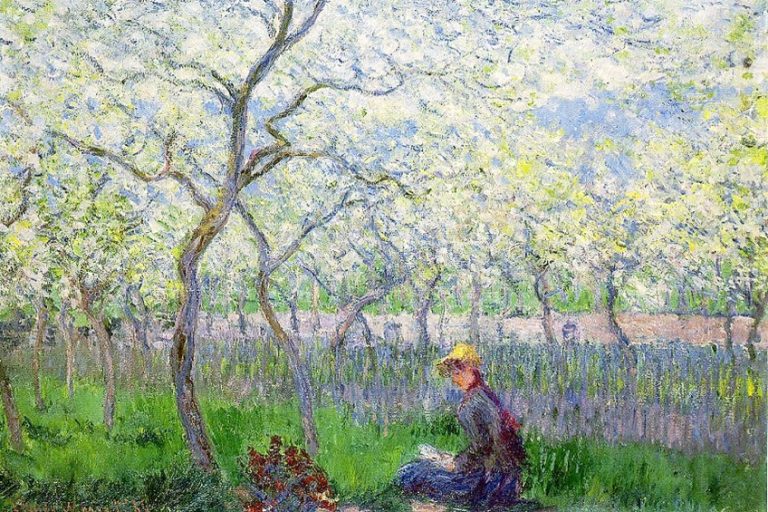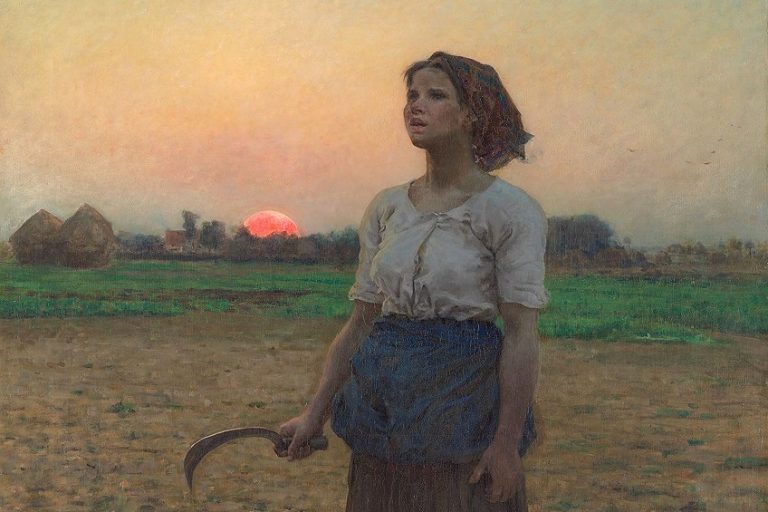“The Yellow Christ” by Paul Gauguin – The Spiritual Power of Art
The Yellow Christ by Paul Gauguin is a seminal work of Post-Impressionism that encapsulates the artist’s distinctive use of bold color and symbolic imagery. Painted in 1889 during his time in Pont-Aven, Brittany, this piece is notable for its unconventional depiction of a crucifixion scene. Gauguin employs a striking palette dominated by vibrant yellows to portray Christ, juxtaposed against a Breton landscape. This artwork not only reflects Gauguin’s fascination with religious themes but also his innovative approach to color and form, which sought to convey emotional and spiritual intensity. The Yellow Christ stands as a testament to Gauguin’s profound impact on modern art, challenging traditional representations and pushing the boundaries of artistic expression.
Key Takeaways
- The Yellow Christ by Paul Gauguin exemplifies his synthetist style with bold outlines and vibrant colors.
- The painting reflects Gauguin’s personal and spiritual journey during his time in Pont-Aven.
- This work has had a lasting influence on the art world and continues to captivate audiences.
Historical Context
| Artist | Paul Gauguin (1848 – 1903) |
| Date Created | 1889 |
| Medium | Oil on canvas |
| Genre | Religious Art |
| Period/Movement | Post-Impressionism and Symbolism |
| Dimensions (cm) | 91.1 x 73.4 |
| Series/Versions | None |
| Where Is It Housed? | Albright-Knox Art Gallery, Buffalo, New York, United States |
| What It Is Worth | Estimated at $60-80 million (value based on recent market trends and historical significance) |
Paul Gauguin’s The Yellow Christ, painted in 1889, stands as a testament to the artist’s unique vision and style. The artwork, created during his stay in Pont-Aven, France, showcases Gauguin’s move towards Symbolism and his role in the Cloisonnism movement. This painting is notable for its vibrant colors and bold outlines, which are hallmarks of Gauguin’s early “synthetist” style. The painting depicts a striking yellow figure of Christ being crucified, a direct reference to a crucifix in Pont-Aven.

Gauguin’s use of intense colors and flat planes draws the viewer’s attention to the spiritual and emotional depth of the scene, setting it apart from more traditional religious artwork. Through The Yellow Christ, Gauguin offers a vivid portrayal of his personal and spiritual journey, capturing the imagination of art enthusiasts and critics alike. Gauguin’s work has left a lasting impact on the art world, influencing numerous artists and movements that followed. The Yellow Christ is not just a piece of religious art; it is a reflection of Gauguin’s inner struggles and his quest for meaning in life and art.
This piece continues to captivate viewers with its powerful composition and profound symbolism, marking it as a significant work in the canon of art history.
Journey to Pont-Aven
In 1886, Paul Gauguin traveled to Pont-Aven, a small village in Brittany, France. This area attracted many artists due to its picturesque landscapes and rich cultural heritage. By 1888, Gauguin formed the Pont-Aven School, a group of artists who explored new approaches to color and form. Gauguin’s time in Pont-Aven was influenced by his desire to break away from traditional Parisian art. His interactions with local culture and other artists provided fresh inspiration.

Vincent van Gogh and Gauguin shared a deep but complex friendship. Their exchanges profoundly impacted Gauguin’s techniques and themes. Furthermore, Gauguin’s eventual travels to Tahiti in 1891 were influenced by his experiences in Brittany. This period solidified his reputation and contributed to his distinctive style seen in The Yellow Christ.
Gauguin’s innovative use of color and symbolism during his Pont-Aven period set the stage for his later works.
Analysis of The Yellow Christ
Paul Gauguin’s The Yellow Christ is a painting renowned for its striking use of color, bold composition, and cultural depth. This analysis will explore the symbolism and color, the composition and technique, and the cultural significance of the artwork.
Symbolism and Color
The Yellow Christ is drenched in symbolism. Gauguin’s use of yellow for Christ is unusual, suggesting both divinity and the connection to autumn. The color palette is vibrant yet earthy, drawing from the hues of Brittany’s autumn foliage. Yellow can symbolize both light and decay, hinting at Christ’s dual nature of life and sacrifice. The background figures in traditional Breton garb add a layer of cultural significance, embedding the scene in everyday life.

Composition and Technique
Gauguin employs the Cloisonnist style in this painting, which uses bold lines and flat planes of color. The crucifixion scene is central, with Christ’s figure framed by strong outlines and simple, yet strong shapes. This keeps the focus on the spiritual weight of the scene without unnecessary detail. The layout is simple, yet powerful. The upright cross provides a strong vertical line, while the horizontal bar balances the composition.
These deliberate choices highlight the painting’s emotional and spiritual gravity.
Cultural Significance
Set in Brittany, Gauguin’s The Yellow Christ incorporates local culture. The women in 19th-century Breton attire stress the connection between the divine and the mundane. Gauguin depicts the sacred in a familiar rural setting, making it more relatable to his contemporaries. By placing a religious figure in a modern, natural landscape, Gauguin bridges the sacred with the everyday. His approach aligns with Symbolist ideas, emphasizing emotional and spiritual experiences rather than literalism. This cultural layering deepens the painting’s impact and significance.
The Painting’s Influence
The Yellow Christ by Paul Gauguin has left an enduring mark on modern art and has been prominently displayed in prestigious museums for audiences all over the world. Its impact is seen in both artistic inspiration and curatorial significance.
Impact on Modern Art
Paul Gauguin’s The Yellow Christ has significantly influenced modern art. The painting’s use of bold colors and unconventional composition inspired many artists of the 20th century. Gauguin’s approach to spiritual themes and the simplicity of rural life resonated with Fauvism and Expressionism movements. Artists like Henri Matisse and Edvard Munch drew upon Gauguin’s vivid palette and emotional depth.
Moreover, The Yellow Christ played a role in pushing boundaries in symbolism and post-impressionism, making it a cornerstone in the study and evolution of modern art.
Preservation and Exhibitions
The Yellow Christ has been showcased in several world-renowned museums. Notably, it has been displayed at the Albright-Knox Art Gallery, highlighting its importance in historical art collections. Currently, it resides in Buffalo, New York, where it continues to attract art enthusiasts. Institutions such as the Art Institute of Chicago and Thyssen-Bornemisza Museum have also recognized its value, featuring it in various special exhibitions over the years.

Preserving The Yellow Christ involves meticulous care to retain its original vibrancy and detail, ensuring that future generations can appreciate its artistic significance. Frequent exhibitions and loans to prominent galleries underscore its importance in art history.
Interpretations and Critical Reception
Paul Gauguin’s The Yellow Christ is a powerful work that conveys complex themes of faith, suffering, and sacrifice through its bold symbolism and striking use of color.
Legacy of The Yellow Christ Today
The Yellow Christ holds a unique place in the art world, capturing significant attention from both art critics and historians. The painting is often praised for its symbolic use of color, notably the yellow hue of Christ, symbolizing not only spiritual illumination but also suffering and sacrifice. Art historians note that the painting marks a key point in Gauguin’s career where he embraced the Symbolist movement. This movement sought to convey deeper meanings and emotions beyond the mere representation of reality.

The work’s impact extends beyond its own period, influencing modern and contemporary artists. Museums and galleries regularly feature The Yellow Christ, recognizing its enduring relevance and its significant role in art history discussions about faith and sacrifice. The Yellow Christ remains a testament to Gauguin’s unique vision and his ability to transform personal spiritual exploration into universally resonant art.
The Yellow Christ remains a pivotal work in the history of modern art, emblematic of the artist’s bold experimentation and profound spirituality. By reimagining a traditional religious subject with vivid colors and a Breton setting, Gauguin not only challenged the conventions of his time but also paved the way for future artistic movements that embraced emotional depth and symbolic meaning. The painting’s enduring impact lies in its ability to evoke introspection and dialogue about faith, culture, and the human experience, solidifying Gauguin’s legacy as a visionary artist who dared to see the world through a transformative lens.
Frequently Asked Questions
What Is the Interpretation Behind The Yellow Christ Painting?
The Yellow Christ depicts the crucifixion of Jesus set in a 19th-century Breton landscape. Gauguin used bold, flat colors to convey deep spiritual and symbolic meanings. The yellow color of Christ contrasts with the rural surroundings, suggesting a blend of religion and everyday life.
In What Art Movement Is The Yellow Christ Categorized?
The Yellow Christ is considered a key work of Symbolism. Gauguin’s use of vivid colors and simplified forms reflects the Symbolist artists’ desire to express their inner visions and dreams. This painting also shows elements of Gauguin’s early “synthetist” style, characterized by flat planes and bold outlines.
How Does The Yellow Christ Reflect Paul Gauguin’s Art Style?
Gauguin’s style in The Yellow Christ showcases his move away from Impressionism towards Symbolism and Post-Impressionism. The painting features flat planes, strong lines, and intense colors. These elements emphasize emotional and spiritual content over realistic depiction, a hallmark of Gauguin’s approach.
How Does Gauguin Incorporate Symbolism in The Yellow Christ?
Gauguin uses several symbolic elements in The Yellow Christ. The yellow color symbolizes divinity and spiritual illumination. Setting the crucifixion in Brittany connects religious themes with local culture and tradition. These choices highlight Gauguin’s interest in merging the sacred with the everyday world, enriching the painting’s narrative.
Isabella studied at the University of Cape Town in South Africa and graduated with a Bachelor of Arts majoring in English Literature & Language and Psychology. Throughout her undergraduate years, she took Art History as an additional subject and absolutely loved it. Building on from her art history knowledge that began in high school, art has always been a particular area of fascination for her. From learning about artworks previously unknown to her, or sharpening her existing understanding of specific works, the ability to continue learning within this interesting sphere excites her greatly.
Her focal points of interest in art history encompass profiling specific artists and art movements, as it is these areas where she is able to really dig deep into the rich narrative of the art world. Additionally, she particularly enjoys exploring the different artistic styles of the 20th century, as well as the important impact that female artists have had on the development of art history.
Learn more about Isabella Meyer and the Art in Context Team.
Cite this Article
Isabella, Meyer, ““The Yellow Christ” by Paul Gauguin – The Spiritual Power of Art.” Art in Context. June 11, 2024. URL: https://artincontext.org/the-yellow-christ-by-paul-gauguin/
Meyer, I. (2024, 11 June). “The Yellow Christ” by Paul Gauguin – The Spiritual Power of Art. Art in Context. https://artincontext.org/the-yellow-christ-by-paul-gauguin/
Meyer, Isabella. ““The Yellow Christ” by Paul Gauguin – The Spiritual Power of Art.” Art in Context, June 11, 2024. https://artincontext.org/the-yellow-christ-by-paul-gauguin/.











